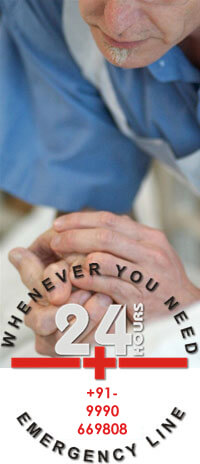Learn First Aid for Bleeding
First aid for bleeding is a critical skill that can help save a person's life in an emergency situation. Here are the steps you should follow to provide first aid for bleeding:
- Call for Help: The first step is to call for emergency medical services or 911. If someone is severely bleeding, they may need professional medical attention.
- Protect Yourself: Before helping someone who is bleeding, make sure you protect yourself by wearing gloves, if possible, or using a clean cloth to create a barrier between you and the blood.
- Elevate and Apply Pressure: If the wound is on an arm or leg, elevate the affected limb above the heart to slow down the bleeding. Then apply direct pressure to the wound with a clean cloth, gauze, or bandage. Hold the pressure for at least 15 minutes, or until the bleeding stops.
- Use a Tourniquet: If the bleeding is severe and not responding to direct pressure, consider using a tourniquet. This should only be used as a last resort and for bleeding from an extremity. Apply the tourniquet above the wound, but not over a joint, and tighten until the bleeding stops. Mark the time the tourniquet was applied and seek medical help immediately.
- Cover and Comfort: After the bleeding has stopped, cover the wound with a clean cloth or bandage and keep the affected limb elevated. Provide comfort and reassurance to the person who is bleeding until help arrives.
Remember to stay calm and provide as much information as possible to the emergency services when you call for help. Learning first aid for bleeding can make a difference in saving a life during an emergency situation.
Regardless how severe, all bleeding can be controlled. If left uncontrolled, bleeding may lead to shock or even death. Most bleeding can be stopped before the ambulance arrives at the scene. While you're performing the steps for controlling bleeding, you should also be calling for an ambulance to respond. Bleeding control is only part of the equation. For tips on summoning an ambulance, check out Calling for Help.
Direct Pressure
The first step in controlling a bleeding wound is to plug the hole. Blood needs to clot in order to start the healing process and stop the bleeding. Just like ice won't form on the rapids of a river, blood will not coagulate when it's flowing.
The best way to stop it is to stop it. Put pressure directly on the wound. If you have some type of gauze, use it. Gauze pads hold the blood on the wound and help the components of the blood to stick together, promoting clotting. If you don't have gauze, terrycloth towels work almost as well.
If the gauze or towel soaks through with blood, add another layer. Never take off the gauze. Peeling blood soaked gauze off a wound removes vital clotting agents and encourages bleeding to resume.
Elevate Above the Heart
Gravity makes blood flow down easier than it flows up. If you hold one hand above your head and the other at your side, the lower hand will be red while the higher one is pale.Step two to control bleeding uses this principle. Elevate the wound above the heart. By elevating the wound, you slow the flow of blood. As the blood slows, it becomes easier to stop it with direct pressure. Remember, it must be above the heart and you must keep direct pressure on it.
Use Pressure Points
Pressure points are areas of the body where blood vessels run close to the surface. By pressing on these blood vessels, blood flow further away will be slowed, allowing direct pressure to stop bleeding.When using pressure points, make sure you are pressing on a point closer to the heart than the wound. Pressing on a blood vessel further from the heart than the wound will have no effect on the bleeding.
Common pressure points:
Arm between shoulder and elbow - brachial arteryGroin area along bikini line - femoral artery
Behind the knee - popliteal artery
Remember to keep the wound elevated above the heart and keep pressure directly on the wound.
When Should You Apply a Tourniquet?
When should you apply a tourniquet? The simple answer: almost never. Tourniquets severely restrict or occlude blood flow to the arm or leg to which they are applied. Using a tourniquet to stop bleeding has the potential to damage the entire arm or leg. Patients have been known to lose limbs from the use of tourniquets.Often, if a tourniquet doesn't cause a loss of function on the extremity which has it, then it probably wasn't applied correctly. Applying a tourniquet is a desperate move - only for the most dire emergencies where the choice between life and limb must be made.
For a step-by-step guide, see How to Use a Tourniquet.
Using a tourniquet requires wrapping a cravat (non stretchy material like terry cloth or linen) around an extremity and tightening it with the use of a windlass stuck through the bandage.
The tourniquet should be tightened until the wound stops bleeding. If there is any bleeding at the wound after placing a tourniquet, then the tourniquet must be tightened.
When a tourniquet is applied, it is important to note the time of application and write that time down somewhere handy. The best bet is to write the time on the patient's forehead with a water-proof marker.
Once bleeding is controlled, take steps to treat the victim for shock.


































